NVIDIA GeForce GTX 750 Ti Review: Meet the Maxwell

Maxwell is the new GPU architecture from NVIDIA which will arrive in a lot of graphics cards this year. Let’s talk about the first model based on this architecture.
Two years ago, in March 2012, Nvidia unveiled to the public its Kepler architecture and the first graphics card it was implemented in, GeForce GTX 680. At that time Nvidia was trying to catch up with AMD whose side was represented by the flagship Radeon HD 7970. The GeForce GTX 680 was a success indeed and restored the equilibrium in the top-end price category. Later on, Nvidia rolled out less advanced and more affordable Kepler-based products as well.
The peculiarity of the recent announcement of Nvidia’s Maxwell architecture is that it is first implemented not in top-end but in low-end solutions which come under the names of GeForce GTX 750 Ti and GTX 750. And there are some valid reasons for that.
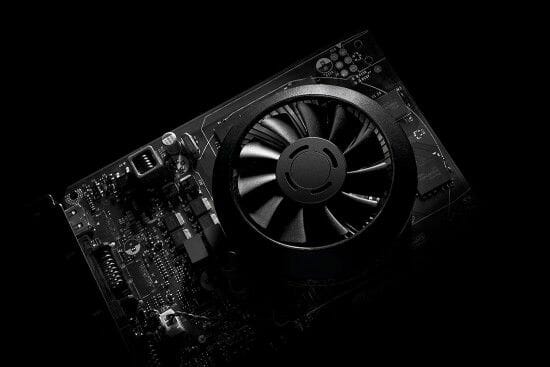
We’ll explain those reasons in our today’s review. We will also take a look at the GeForce GTX 750 Ti and compare its performance with its competitors.
Maxwell 1.0 Architecture: More Energy Efficiency!
Nvidia has officially announced its first GPU with Maxwell architecture, emphasizing the fact that it is just the first generation of Maxwell-based GPUs. Manufactured on the polished-off 28nm tech process, it will consist of two chips: GM107 and GM108. Codenames ending in 7 and 8 are traditionally reserved by Nvidia for junior GPUs which are used in affordable graphics cards. The GeForce GTX 750 and the GeForce GTX 750 Ti are based on the GM107 chip, which succeeds the older GK107.
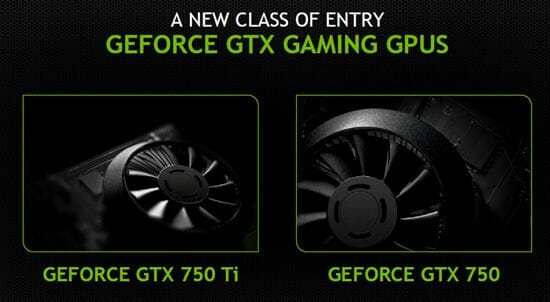
The second generation of Maxwell-based GPUs will be rolled out in the second half of this year and will supposedly consist of three chips codenamed GM200, GM204 and GM206 – all manufactured on new 20nm technology. There will be some additional modifications in the second-generation Maxwell but, like in the first generation, the focus will be on energy efficiency.
Some people argue that performance matters more than energy efficiency but it turns out that energy efficiency is actually the key to high performance. The saved watts can be spent to increase clock rates or the number of computing subunits. For example, suppose we have two chips with the same performance, but one consumes 300 watts whereas the other, 150 watts. The latter chip can be modified to have more computing subunits or higher clock rates and beat the first chip in performance because the 300W chip has no reserves for similar modifications due to its already excessive power draw. Moreover, lower power consumption makes a graphics card with better consumer properties, other factors being the same. Less advanced power and cooling systems can be used, which translates into better reliability and lower noise level.
Energy efficiency has been improving for years, becoming even more important after the process of transitioning to new manufacturing technologies has slowed down. When it is not possible to quickly switch to a “thinner” tech process, you have to resort to increasing clock rates in order to make your top-end solutions faster. And it would not be possible without optimizing your product designs for better energy efficiency. Even transitioning to a new tech process is not a solution anymore since transistor density grows faster than power consumption per each transistor. So if the GPU architecture is not optimized, heat dissipation per each square millimeter of the semiconductor chip will be growing until it becomes an obstacle to increasing clock rates and, consequently, performance.
Nvidia claims that the Maxwell was designed for a record-breaking performance-per-watt ratio. It is no wonder considering that it was developed with the future 20nm tech process in mind. We can remind you that two years ago Intel released its Ivy Bridge CPUs manufactured on 22nm tech process with 3D tri-gate technology. The transistor became tridimensional. TSMC plans to switch to 3D transistors in its 20nm tech process, too. That will increase transistor density but also heat dissipation. So, if with the current 28nm tech process Maxwell-based solutions prove to be economical and cold, the upcoming 20nm Maxwell-based chips (with much more transistors) will be just ordinary in these parameters. Now that it’s clear why Nvidia tried to make its Maxwell 1.0 architecture as energy-efficient as possible, let’s see how it did so. Here is an overview of the GM107 chip:
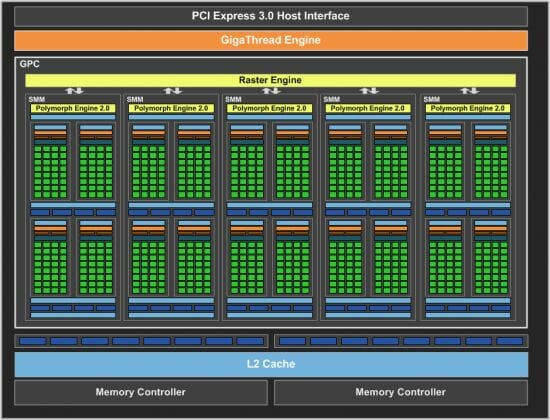
There seem to be no fundamental differences from the previous Kepler architecture. We can see a GigaThread Engine, an L2 cache, raster operators and a graphics processing cluster (GPC) with five Maxwell streaming multiprocessors (Nvidia calls them “SMMs”). But every difference we can spot is actually meant to ensure higher energy efficiency. The L2 cache is 2 MB large, which is 8 times the size of the L2 cache of the previous GK107 chip. The larger cache can contain more data for reading and writing, reducing memory controller load and increasing the cache hit rate. Besides higher energy efficiency, the cache also boosts the overall performance, by the way.
The key difference of the Maxwell from the Kepler is in the new streaming multiprocessors which are referred to as SMMs rather than SMXs. As is typical of Nvidia’s junior solutions, the GM107 has one GPC but this GPC contains five SMMs whereas in the Kepler architecture there were up to three SMXs per each GPC. It means that there is less control logic per each SM. The SMM design is different, too.
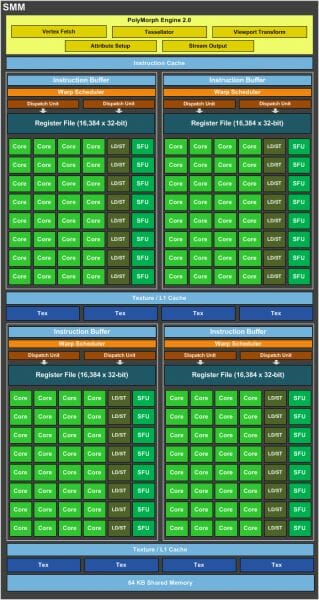
Here are the key differences from the Kepler architecture:
- The system of caches has been revised. In the Kepler, there was a 64KB L1 cache/shared memory while the texture cache was separate. In the Maxwell, there is a separate 64KB block of shared memory while the texture and L1 caches are combined into one.
- As opposed to the Kepler where all of SMX resources were shared, an SMM is divided into several groups of subunits with dedicated control logic. This simplifies the internal connections and control logic, lowering the resulting power consumption.
- As in the Kepler, one SMM contains four warp schedulers but now they control not a single array of 192 SPs but four separate 32-SP arrays (one per each warp scheduler). Thus, one SMM contains 128 SPs. Thanks to control logic and SP design optimizations, the efficiency of each SP has grown by about 35%, so one SMM is just a little slower compared to a single SMX while consuming only half the power and incorporating fewer transistors. The register file is the same total size as in the Kepler: 65,536 entries, 32 bits each. It is also split up into four parts, 16,384 entries each.
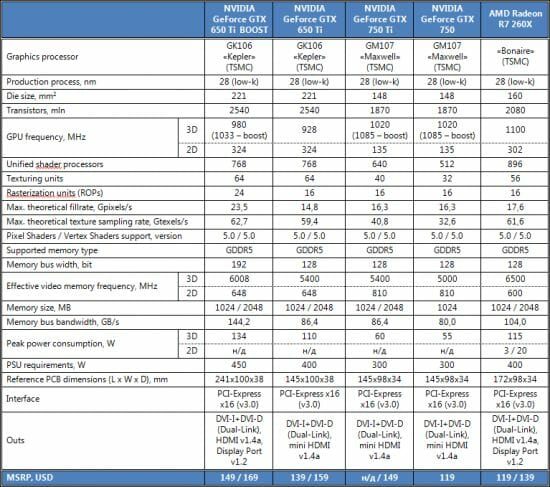
- Each warp scheduler now has an instruction buffer halfway between the instruction cache and the warp scheduler itself. This helps increase performance while lowering the total power consumption.
- There are eight texture subunits in an SMM as opposed to 16 in an SMX. These eight are split up into two quads, each quad having dedicated texture and L1 caches (which are now combined). One quad of texture subunits is shared by two processing subunits consisting of 32 SPs.
So despite the outward similarities, the Maxwell differs from the Kepler architecture from a number of aspects. Many subunits have been redesigned. There are now fewer inter-chip connections. Large subunits have been split up into smaller ones. There is a neat hierarchy of subunits with different types of execution devices linked to dedicated resources. According to Nvidia, the execution devices have become more efficient whereas the energy efficiency of the new architecture is double that of the Kepler. In fact, the GM107, as implemented in the GeForce GTX 750 Ti card, claims to be faster practically than the GeForce GTX 650 Ti while having fewer execution devices and lower peak theoretical performance. And the new card only needs 60 watts while its predecessor, up to 110! That’s quite an achievement, really. The Kepler used to be regarded as energy-efficient, too. So improving this parameter within the same tech process must have been a daunting task.
Now let’s move on from theory to practice and put Nvidia’s claims to test.
Specifications and Recommended Price
The specs and recommended price of Nvidia’s GeForce GTX 750 Ti and GTX 750 cards are listed in the table in comparison with the reference cards Nvidia GeForce GTX 650 Ti Boost, Nvidia GeForce GTX 650 Ti and AMD Radeon R7 260X:
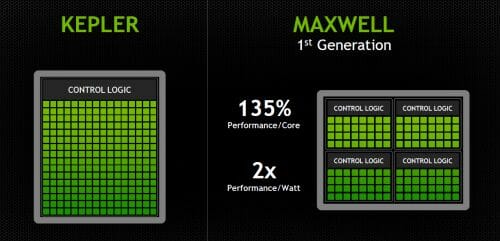
PCB Design and Features
The reference Nvidia GeForce GTX 750 Ti is only 145 mm long, just like its predecessor GeForce GTX 650 Ti.
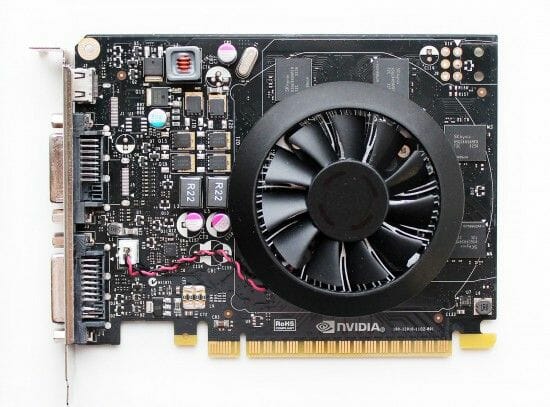
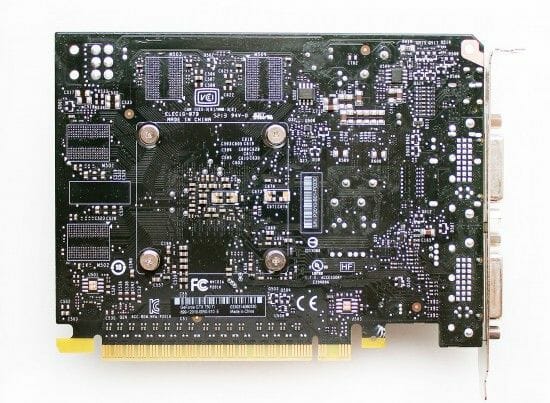
The new card is somewhat slimmer at 34 mm:
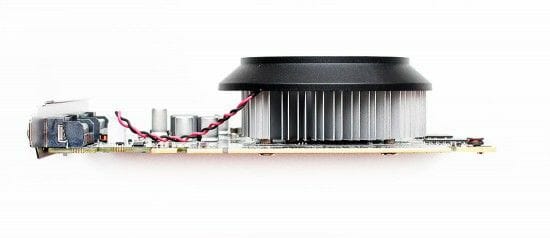
There are no differences in terms of video outputs: dual-link DVI-I and DVI-D ports and a mini-HDMI 1.4a.
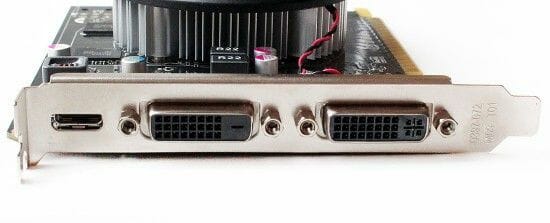
The 6-pin power connector has disappeared from the PCB although there is a contact pad for it there:
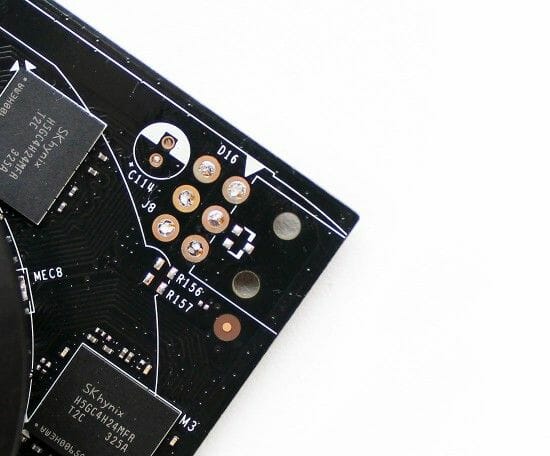
It might be expected since the specified power draw of the GeForce GTX 750 Ti is only 60 watts as compared to the GTX 650 Ti’s 110 watts. Thus, the new card can be easily powered via a mainboard’s PCI Express slot that can deliver up to 75 watts. A 300W PSU is recommended for a computer with one such graphics card. The GeForce GTX 750 Ti doesn’t support SLI technology.
The new card is based on the PCB from the GeForce GTX 650 Ti.
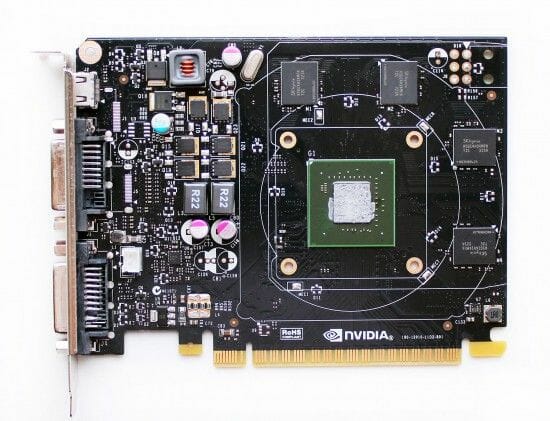
The power system has two phases for the GPU and one phase for the memory chips and PLL.
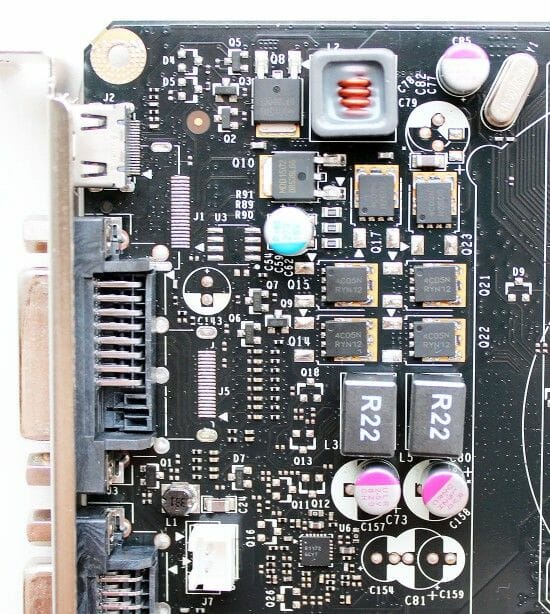
The GM107 Maxwell die is only 148 sq. mm large and lacks a protective frame. We guess, however, that off-the-shelf products will have that very useful element, which has been present on them since the GTX 650 Ti.
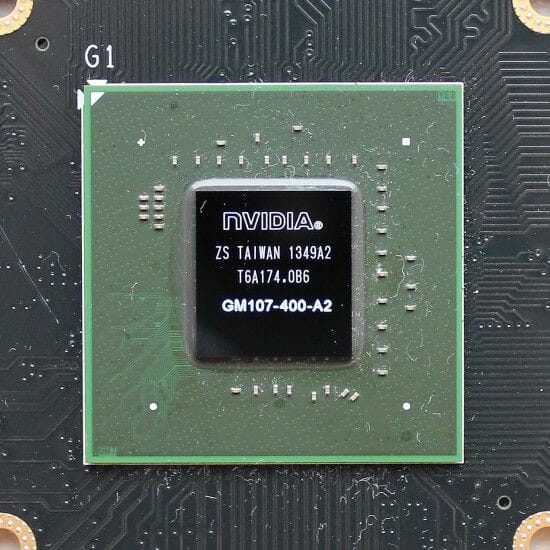
The GPU chip is revision A2 and, judging by its marking, was manufactured on the 49th week of 2013 (in early December). The base clock rate in 3D applications is 1020 MHz. It can be boosted to 1085 MHz but, according to our monitoring tools, the top frequency is 1163 MHz. The voltage is 1.168 volts but off-the-shelf samples of the card may have a different voltage. In 2D mode the GPU clock rate is dropped to 135 MHz (and not to 324 MHz as with the GeForce GTX 650 Ti) whereas the voltage is lowered to 0.95 volts.
The ASIC quality of our sample of the GeForce GTX 750 Ti GPU is 74.0%:
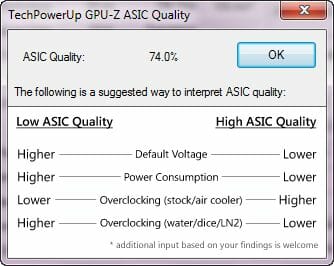
The Nvidia GeForce GTX 750 Ti is equipped with 2 gigabytes of GDDR5 memory in SK Hynix’s FCBGA-packaged H5GC4H24MFR-T2C chips:
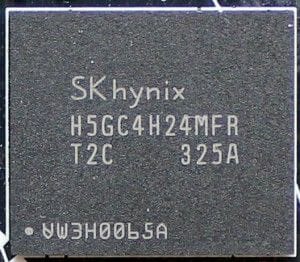
The chips are rated for 5000 MHz at 1.35 volts or 6000 MHz at 1.5 volts. The GeForce GTX 750 Ti seems to use the latter variant, clocking its memory at 5400 MHz. The peak bandwidth across the 128-bit bus is 86.4 GB/s, so the new card is no different from the GeForce GTX 650 Ti in terms of its memory subsystem.
The latest version of GPU-Z is already familiar with the GeForce GTX 750 Ti:
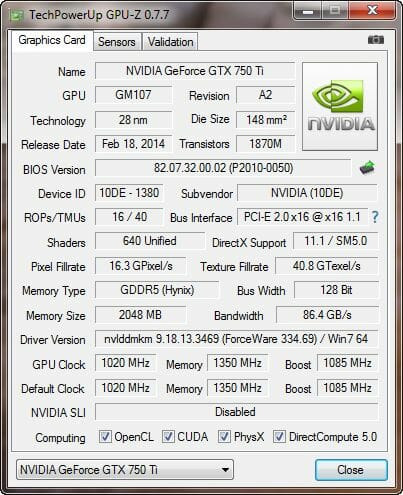
Cooling System: Noise and Efficiency
The reference GeForce GTX 750 Ti comes with an extremely simple cooler that consists of a small aluminum heatsink with a plastic fan on top of it:
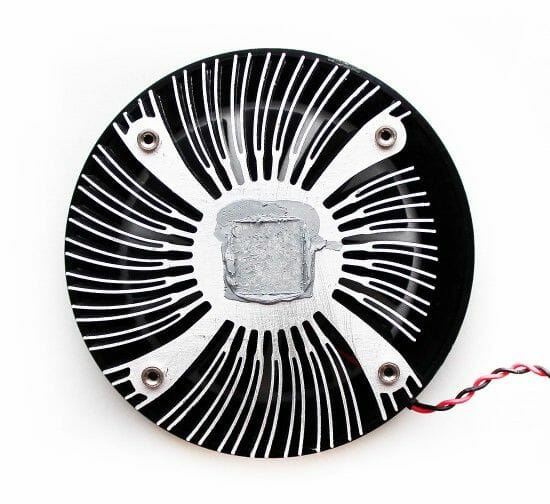
The fan is secured with four screws and can be easily removed:
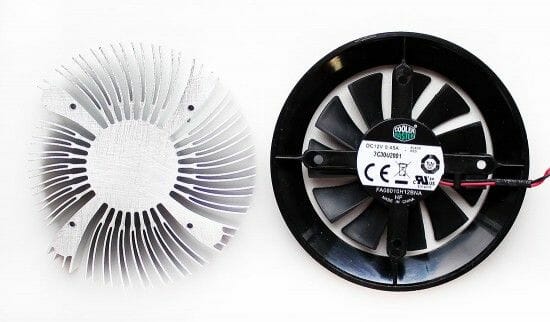
It is a 60mm FA06010H12BNA model from Cooler Master. It runs on ball bearings and has an actual diameter of 55 mm:
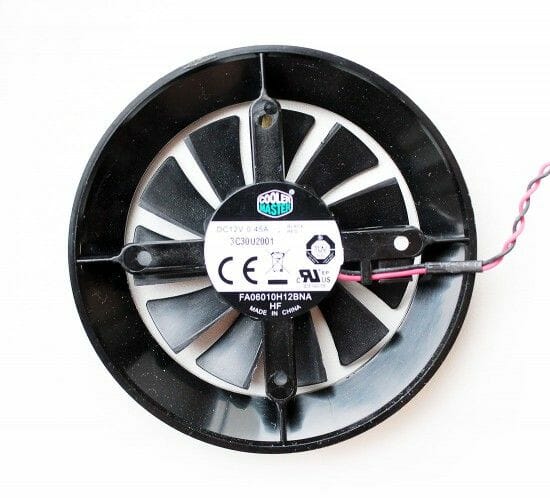
It lacks PWM regulation, so its speed is changed through voltage. It doesn’t support speed monitoring.
To measure the temperature of the GeForce GTX 750 Ti we ran Aliens vs. Predator (2010) five times at the maximum visual quality settings and resolution of 2560×1440 pixels, with 16x anisotropic filtering but without MSAA.
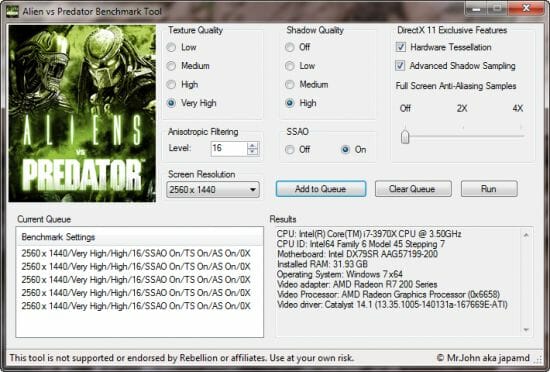
We used MSI Afterburner 3.0.0 beta 18 and GPU-Z version 0.7.7 to monitor temperatures inside the closed computer case. The computer’s configuration is detailed in the following section of our review. All tests were performed at 25°C room temperature.
Despite its simplicity, the cooler is capable of keeping the GPU temperature within 70°C and remain comfortable in terms of noise level:
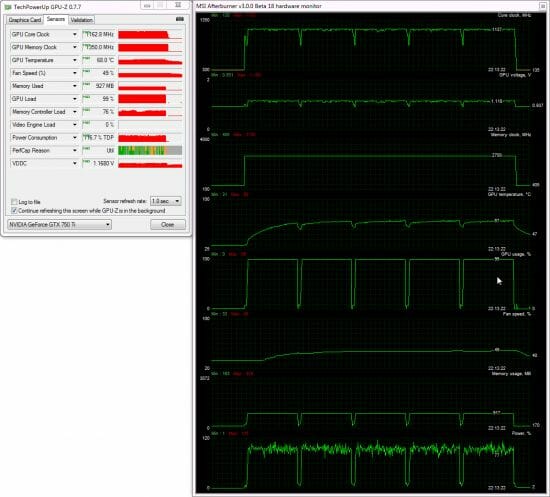
When we manually set the fan at its maximum speed, the GPU temperature dropped by 8°C – down to 60°C:
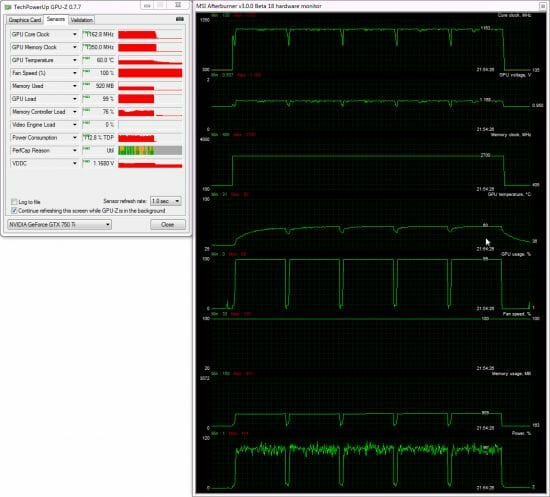
The noise level is low indeed. When regulated automatically, the GeForce GTX 750 Ti’s cooler is hardly audible against the background noise of a quiet computer.
Overclocking Potential
We couldn’t spend much time to explore the overclocking potential of our GeForce GTX 750 Ti due to time constraints, yet we found out that the card’s GPU and memory could be overclocked by 135 MHz (+13.2%) and 1260 MHz (+23.3%), respectively, without adjusting its voltage or fan speed.
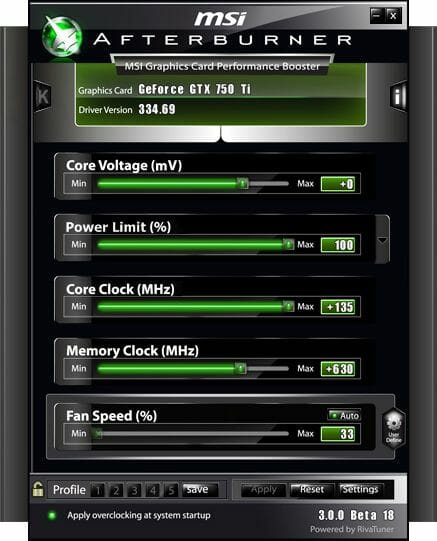
The resulting clock rates were 1155-1220/6660 MHz.
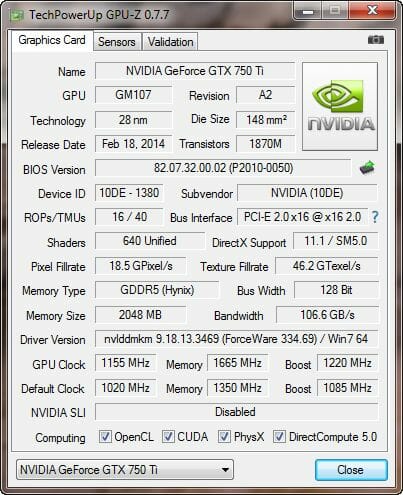
According to our monitoring tools, the GPU frequency would peak up to 1300 MHz in the Boost mode.
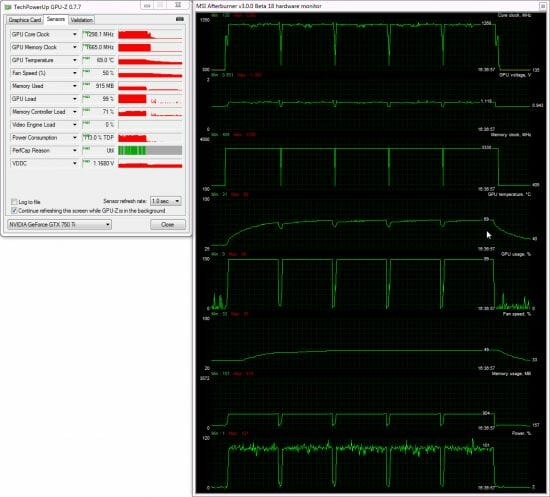
When the card was overclocked, its GPU grew 1°C hotter at peak load and its fan’s output increased from 49 to 50%. We guess that’s very nice overclocking considering that we’ve got an early test sample of the GeForce GTX 750 Ti.
Gallery of Off-the-Shelf GeForce GTX 750 Ti Cards
Original versions of the GeForce GTX 750 Ti are available from nearly every major brand. Hopefully, we’ll be able to test some of them, but for now we can show you their photos:
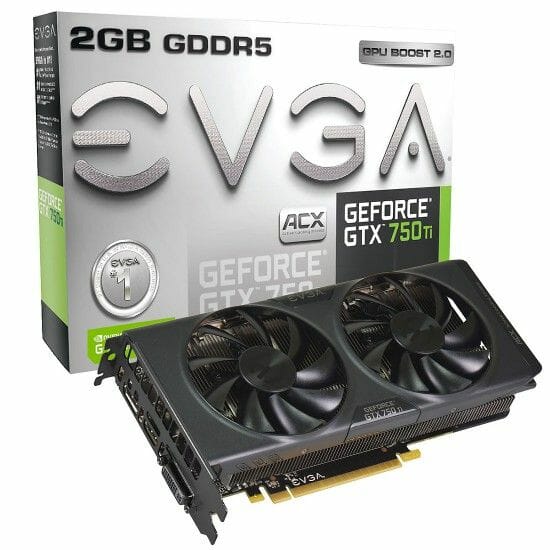
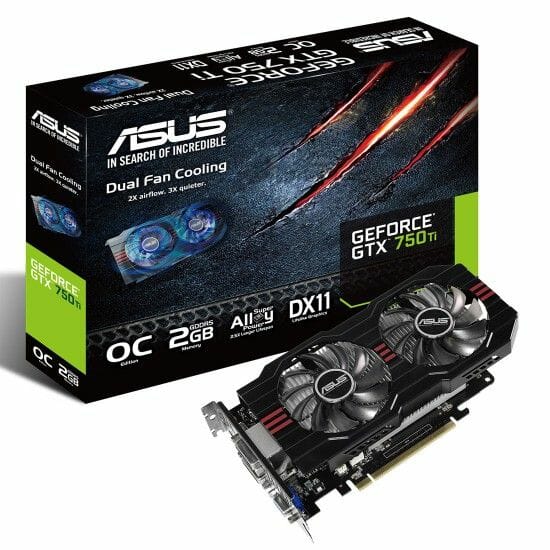
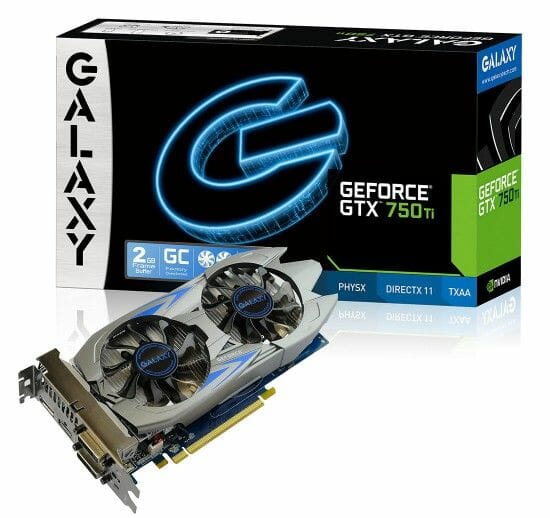
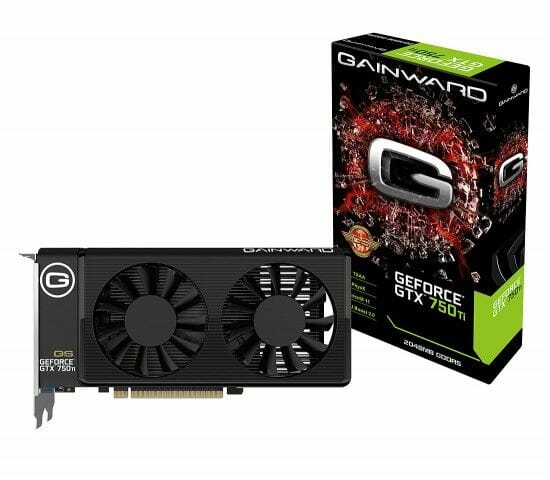
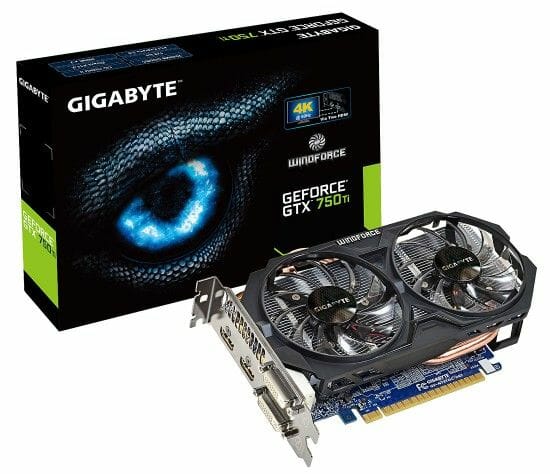
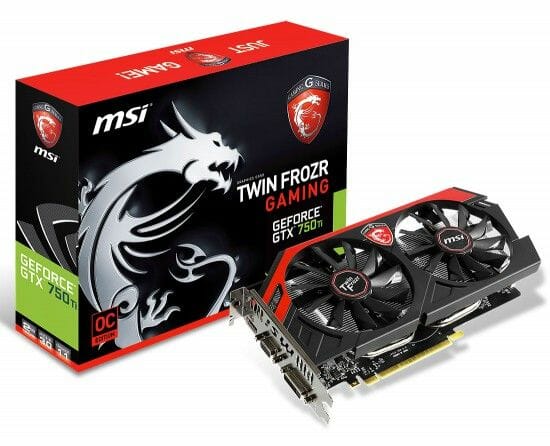
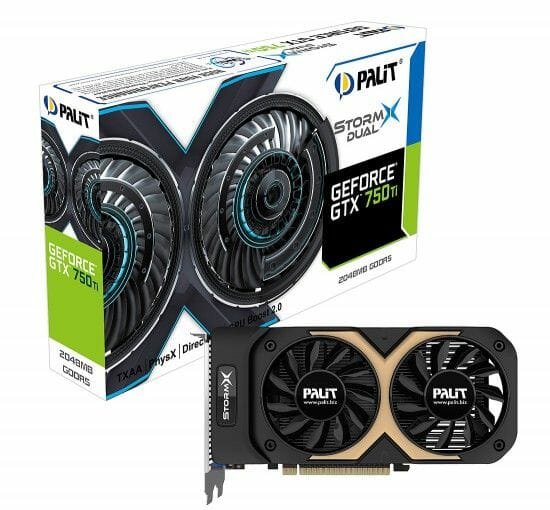
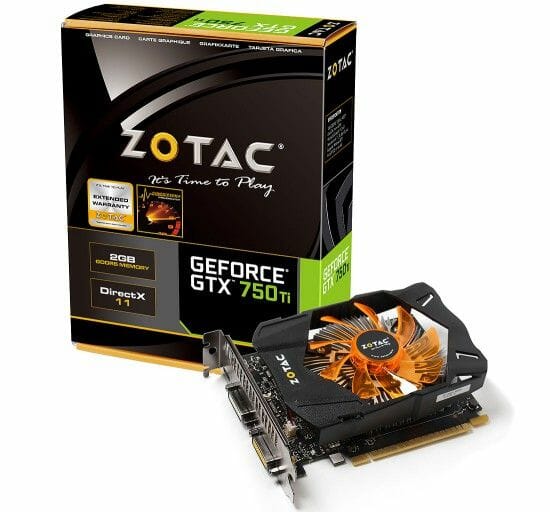
GeForce Experience
The new GeForce GTX 750 Ti is accompanied with Nvidia’s GeForce Experience software which has recently been updated to version 1.8.2.
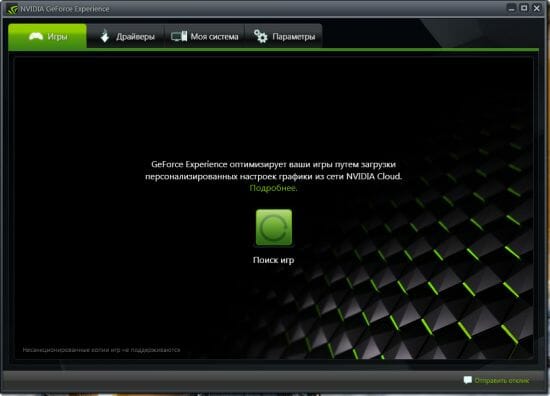
GeForce Experience can automatically select optimal game settings depending on your computer configuration. It will also remind you of driver updates:
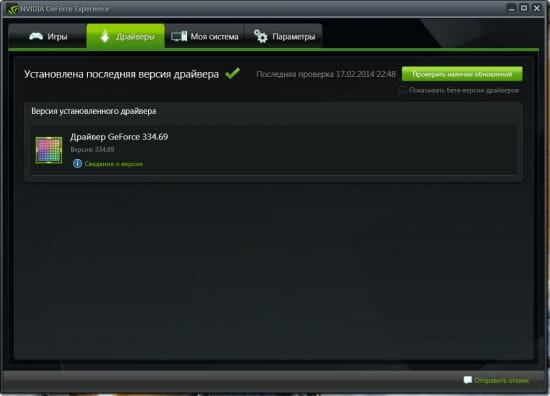
It can report some basic information about your system…
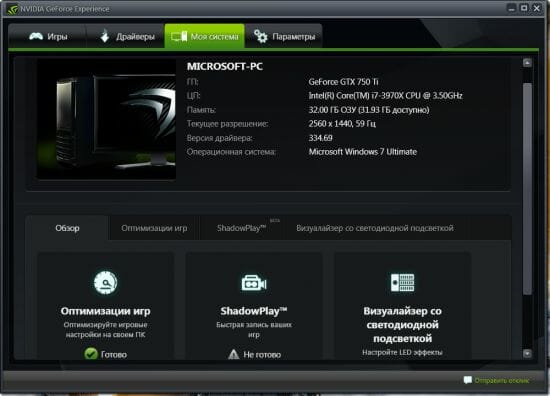
…and let you adjust certain parameters:
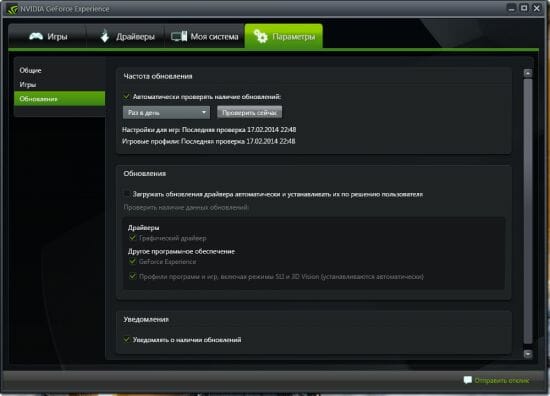
We guess the most interesting feature is ShadowPlay, which allows you to record your gameplay.
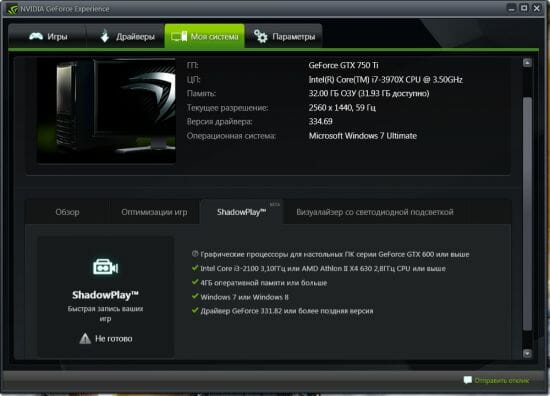
Using the integrated hardware H.264 encoder NVENC, ShadowPlay can record up to 20 minutes of gameplay in 1920×1080@60fps format to your hard disk as an MP4 file which you can later edit or share on the internet.
Testbed and Methods
Here is the list of components we use in our testbed.
- Mainboard: Intel Siler DX79SR (Intel X79 Express, LGA 2011, BIOS 0590 dated 17.07.2013)
- CPU: Intel Core i7-3970X Extreme Edition 3.5/4.0 GHz (Sandy Bridge-E, C2, 1.1 V, 6x256KB L2 cache, 15MB L3 cache)
- CPU cooler: Phanteks PH-TC14PЕ (2xCorsair AF140 fans, 900 RPM)
- Thermal grease: ARCTIC MX-4
- Graphics cards:
- HIS Radeon R9 270 iPower IceQ X² Boost Clock (2 GB, 952/5600 MHz)
- MSI GeForce GTX 650 Ti BOOST Twin Frozr III (2 GB, 1033-1098/6008 MHz)
- Nvidia GeForce GTX 750 Ti (2 GB, 1020-1085/5400 MHz)
- AMD Radeon R7 260X (2 GB, 1100/6500 MHz)
- ASUS Radeon HD 7790 DirectCU II (1 GB, 1075/6400 MHz)
- System memory: DDR3 4x8GB G.SKILL TridentX F3-2133C9Q-32GTX (XMP: 2133 MHz, 9-11-11-31, 1.6 volts)
- System disk: SSD 256GB Crucial m4 (SATA 6 Gbit/s, CT256M4SSD2, BIOS v0009)
- Games/software disk: Western Digital VelociRaptor (SATA-2, 300 GB, 10000 RPM, 16 MB cache, NCQ) in a Scythe Quiet Drive 3.5″ enclosure
- Backup disk: Samsung Ecogreen F4 HD204UI (SATA-2, 2 TB, 5400 RPM, 32 MB cache, NCQ)
- Sound card: Auzen X-Fi HomeTheater HD
- Computer case: Antec Twelve Hundred (front panel: three Noiseblocker NB-Multiframe S-Series MF12-S2 fans at 1020 RPM; back panel: two Noiseblocker NB-BlackSilentPRO PL-1 fans at 1020 RPM; top panel: one preinstalled 200mm fan at 400 RPM)
- Control & monitoring panel: Zalman ZM-MFC3
- Power supply: Corsair AX1200i (1200 W), 120mm fan
- Monitor: 27″ Samsung SA850 (DVI-I, 2560×1440, 60 Hz)
Even at its recommended price the new GeForce GTX 750 Ti will find itself among some strong opponents. It replaces the GeForce GTX 650 Ti but is meant to compete with the faster and somewhat cheaper GeForce GTX 650 Ti Boost. We include the latter into this test session along with the even faster and more expensive Radeon R9 270. These two cards are represented by their versions from HIS and MSI clocked at the standard frequencies:
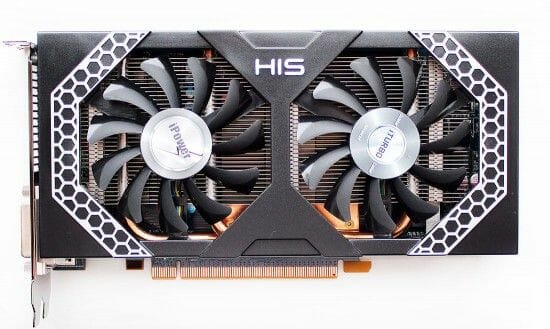
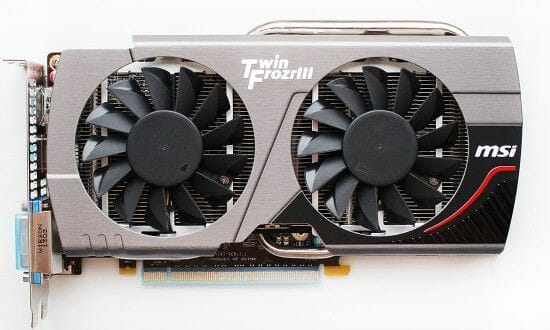
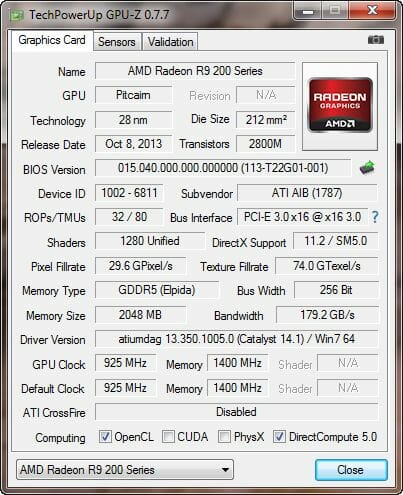
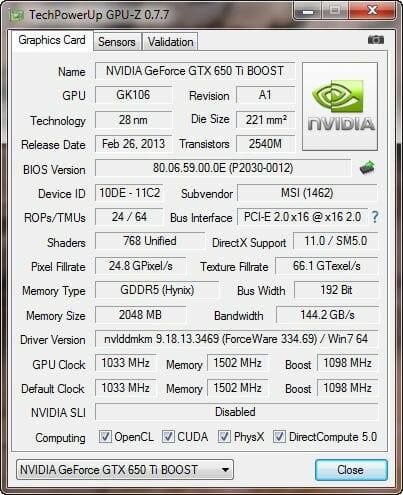
We also include a cheaper Radeon R7 260X 2GB (in its reference version) and an ASUS Radeon HD 7790 DirectCU II 1GB (it’s slightly pre-overclocked):
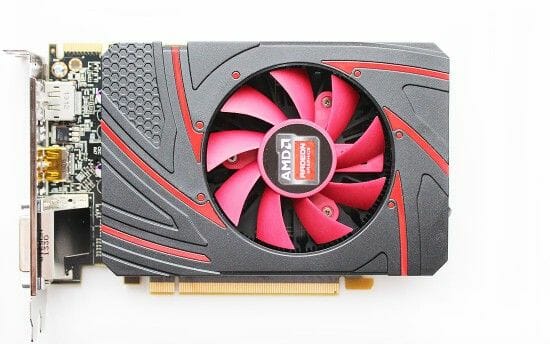
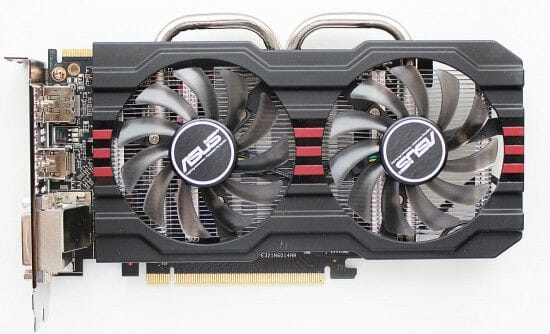
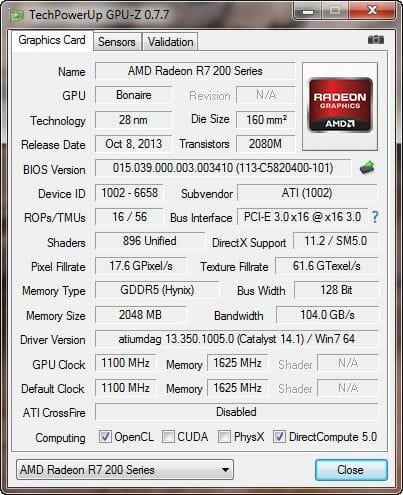
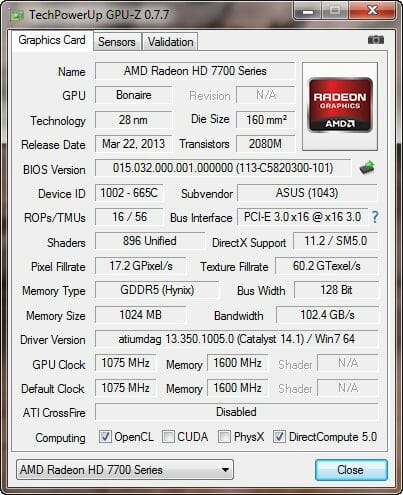
Thus, we have a total of five graphics cards and we’ll test the GeForce GTX 750 Ti both at its default frequencies and in the overclocked mode.
In order to lower the dependence of the graphics cards’ performance on the overall platform speed, we overclocked our 32nm six-core CPU to 4.8 GHz by setting its frequency multiplier at x48 and enabling Load-Line Calibration. The CPU voltage was increased to 1.38 volts in the mainboard’s BIOS:
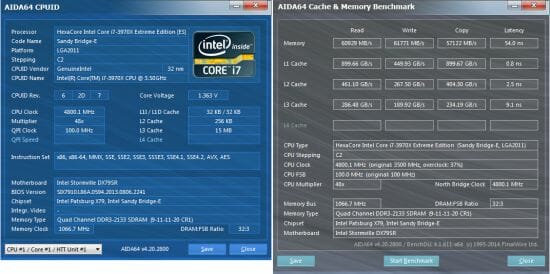
Hyper-Threading was turned on. We used 32 GB of system memory at 2.133 GHz with timings of 9-11-11-20_CR1 and voltage of 1.6125 volts.
The testbed ran Microsoft Windows 7 Ultimate x64 SP1 with all critical updates installed. We used the following drivers:
- Intel Chipset Drivers – 9.4.4.1006 WHQL dated 21.09.2013
- DirectX End-User Runtimes, dated 30 November 2010
- AMD Catalyst 14.1 Beta 1.6 (13.350.1005.0) dated 18.12.2013
- GeForce 334.69 Beta dated 19.01.2014
Considering the relatively low performance of the tested products, we only use the resolution of 1920×1080 pixels. There were two visual quality modes: “Quality+AF16x” means the default texturing quality in the drivers + 16x anisotropic filtering whereas “Quality+ AF16x+MSAA 4x” means 16x anisotropic filtering and 4x antialiasing. In some games we use antialiasing algorithms other than MSAA as indicated below and in the diagrams. We enabled anisotropic filtering and full-screen antialiasing from the game’s menu. If the corresponding options were missing, we changed these settings in the Control Panels of the Catalyst and GeForce drivers. We also disabled Vsync there. There were no other changes in the driver settings.
The graphics cards are tested in two benchmarks and 12 games updated to the latest versions.
- 3DMark (2013) (DirectX 9/11) version 1.2.250.0: Cloud Gate, Fire Strike and Fire Strike Extreme scenes.
- Unigine Valley Bench (DirectX 11) version 1.0: maximum visual quality settings, 16x AF and/or 4x MSAA, 1920×1080.
- Total War: SHOGUN 2 – Fall of the Samurai (DirectX 11) version 1.1.0: integrated benchmark (the Sekigahara battle) with maximum visual quality settings and 8x MSAA.
- Sniper Elite V2 Benchmark (DirectX 11) version 1.05: Adrenaline Sniper Elite V2 Benchmark Tool v1.0.0.2 BETA with maximum graphics quality settings (“Ultra” profile), Advanced Shadows: HIGH, Ambient Occlusion: ON, Stereo 3D: OFF, Supersampling: OFF, two sequential runs of the test.
- Sleeping Dogs (DirectX 11) version 1.5: Adrenaline Sleeping Dogs Benchmark Tool v1.0.2.1 with maximum image quality settings, Hi-Res Textures pack installed, FPS Limiter and V-Sync disabled, two consecutive runs of the built-in benchmark with quality antialiasing at Normal and High levels.
- Hitman: Absolution (DirectX 11) version 1.0.447.0: built-in test with Ultra settings, enabled tessellation, FXAA and global lighting.
- Crysis 3 (DirectX 11) version 1.2.0.1000: maximum visual quality settings, Motion Blur – Medium, lens flares – on, FXAA and MSAA 4x, two consecutive runs of a scripted scene from the beginning of the “Swamp” mission (110 seconds long).
- Tomb Raider (2013) (DirectX 11) version 1.1.748.0: Adrenaline Benchmark Tool, “Ultra” image quality settings, V-Sync disabled, FXAA and 2x SSAA antialiasing enabled, TessFX technology activated, two consecutive runs of the in-game benchmark.
- BioShock Infinite (DirectX 11) version 1.1.24.21018: Adrenaline Action Benchmark Tool with “High” and “Ultra” quality settings, two consecutive runs of the in-game benchmark.
- Metro: Last Light (DirectX 11) version 1.0.0.15: we used the built-in benchmark for two consecutive runs of the D6 scene. All image quality and tessellation settings were at “High”, Advanced PhysX technology disabled, with and without SSAA antialiasing.
- GRID 2 (DirectX 11) version 1.0.85.8679: we used the built-in benchmark, the visual quality settings were all at their maximums, the tests ran with and without MSAA 4x antialiasing with eight cars on the Chicago track.
- Company of Heroes 2 (DirectX 11) version 3.0.0.12358: two consecutive runs of the integrated benchmark at maximum image quality and physics effects settings.
- Batman: Arkham Origins (DirectX 11) version 1.0 update 8: Ultra visual quality, V-Sync disabled, all the effects enabled, all DX11 Enhanced features enabled, Hardware Accelerated PhysX = Normal, two consecutive runs of the in-game benchmarks.
- Battlefield 4 (DirectX 11) version 1.4: Ultra settings, two successive runs of a scripted scene from the beginning of the “Tashgar” mission (110 seconds long).
As you can see, we don’t use the highest possible visual quality settings in some games. We do this to ensure that the frame rate is more or less at a playable level.
We publish the bottom frame rate for games that report it. Each test was run twice, the final result being the best of the two if they differed by less than 1%. If we had a larger difference, we reran the test at least once again to get repeatable results.
Performance
The results of Nvidia’s GeForce series cards are indicated in green in the diagrams. The color of AMD’s Radeons is red. The graphics cards are listed in the order of descending recommended price.
3DMark (2013)
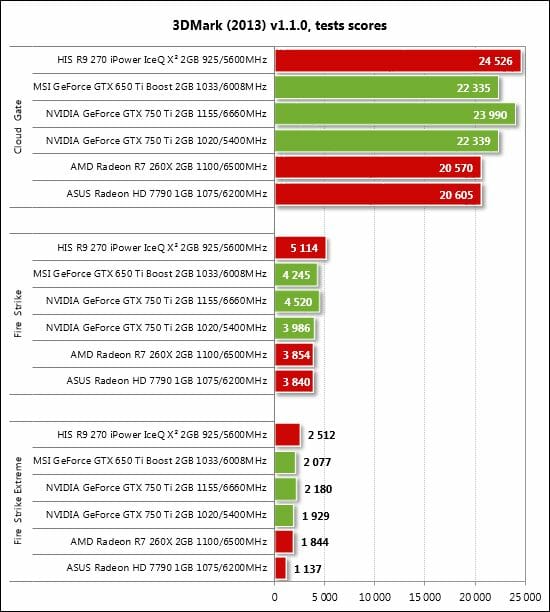
The GeForce GTX 750 Ti looks good in our first semisynthetic benchmark. It is a little faster than the AMD Radeon R7 260X, a little slower than the MSI GeForce GTX 650 Ti Boost, and beats the latter when overclocked. The more expensive Radeon R9 270 in the HIS version remains unrivalled.
Unigine Valley Bench
It’s different in Unigine Valley:
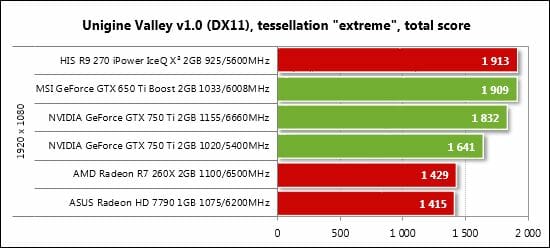
Beating the two low-end AMD-based cards, the new GeForce GTX 750 Ti falls behind the GeForce GTX 650 Ti Boost and cannot catch up with it even when overclocked. The MSI, in its turn, is about as fast as the Radeon R9 270 from HIS.
Total War: SHOGUN 2 – Fall of the Samurai
This game shows us a picture which is typical of the entire test session:
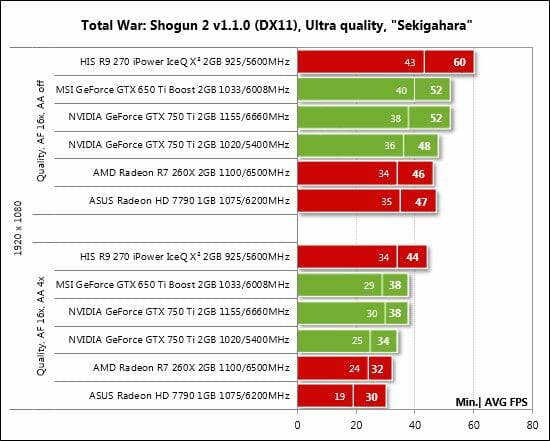
Working at its default clock rates, the GeForce GTX 750 Ti is somewhat faster than the Radeon R7 260X and 8-11% slower than MSI’s GeForce GTX 650 Ti Boost. When overclocked to 1155/6660 MHz, it can catch up with the pre-overclocked GTX 650 Ti Boost.
Sniper Elite V2 Benchmark
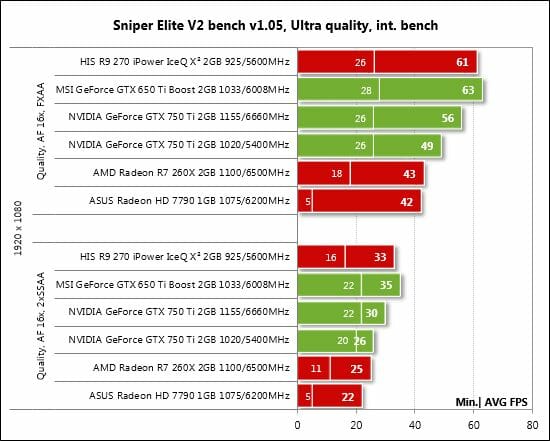
The GeForce GTX 750 Ti enjoys a larger advantage over the Radeon R7 260X in this game – up to 14% with disabled antialiasing. The gap from the GeForce GTX 650 Ti Boost is also larger, though, and the new card can’t bridge it through overclocking.
Sleeping Dogs
Our overclocking is more rewarding in this game:
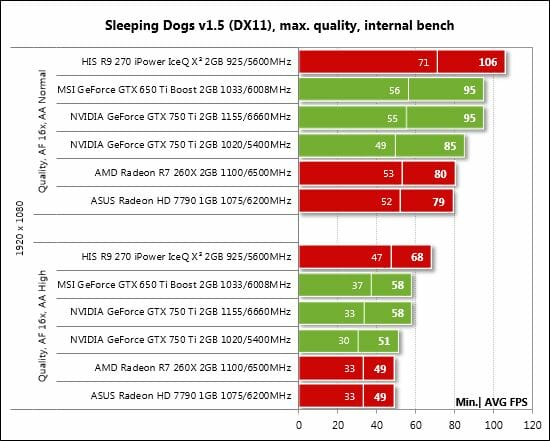
We can also note that the GeForce GTX 750 Ti is 4 to 6% ahead of the Radeon R7 260X here.
Hitman: Absolution
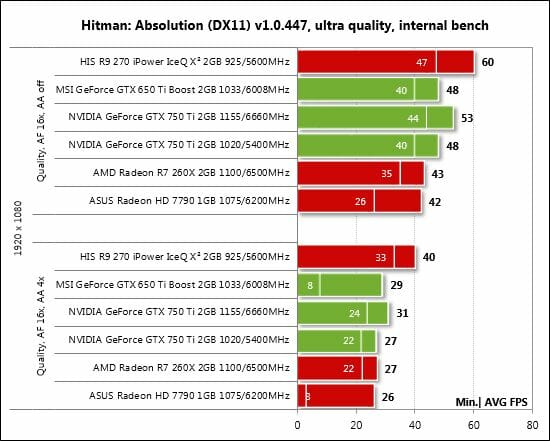
Although this game’s engine favors AMD solutions, the GeForce GTX 750 Ti is just as good as the Radeon R7 260X. It is also comparable to the GeForce GTX 650 Ti Boost at the default frequencies and beats the latter when overclocked.
Crysis 3
There’s nothing extraordinary about the Crysis 3 results:
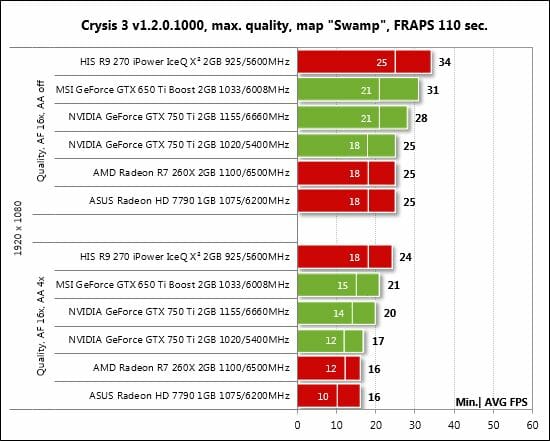
The GeForce GTX 750 Ti is just a tiny bit faster than the Radeon R7 260X at the default frequencies. When overclocked it is very close to the MSI GeForce GTX 650 Ti Boost. Overall, these products have very low frame rates in Crysis 3.
Tomb Raider (2013)
Tomb Raider favors AMD-based cards which match the comparably priced GeForce products in this test. The more advanced R9 270 is in the lead:
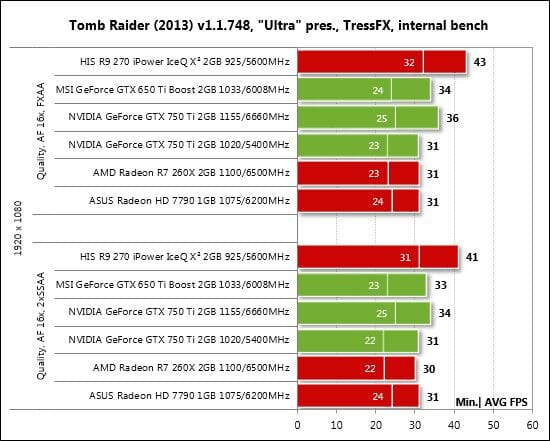
The overclocked GeForce GTX 750 Ti is ahead of the GeForce GTX 650 Ti Boost here.
BioShock Infinite
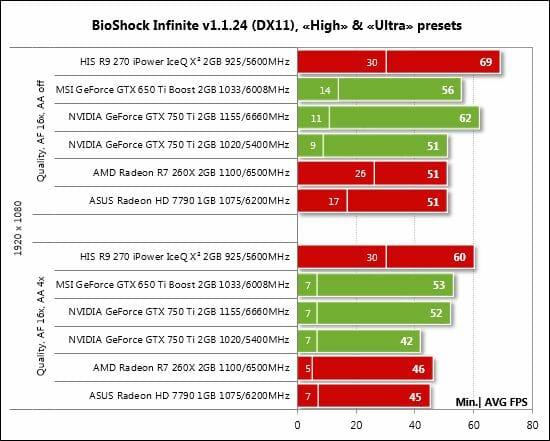
It is in this game that our overclocking is the most rewarding as the GeForce GTX 750 Ti speeds up by 21.6 to 23.8%. As a result, the overclocked GTX 750 Ti beats the GTX 650 Ti Boost without antialiasing and equals the latter with 4x MSAA.
Metro: Last Light
We run this game with Advanced PhysX disabled and with simplified visual quality settings. Still, the frame rates are rather low:
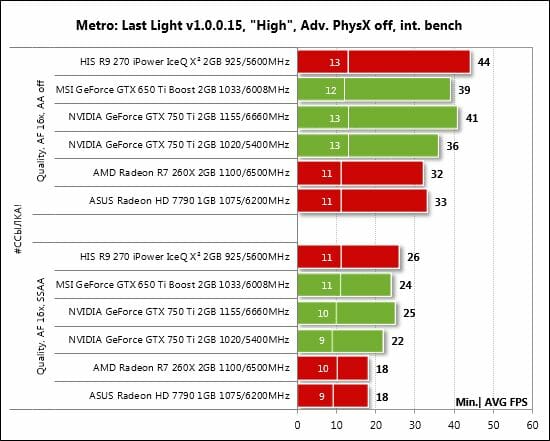
The GeForce GTX 750 Ti is ahead of the Radeon R7 260X by 13 to 22% and falls behind the MSI GeForce GTX 650 Ti Boost by 8%. When overclocked, it beats the MSI by 4-5%. The new card proves to have excellent scalability at overclocking despite its 128-bit memory bus and low number of shader processors.
GRID 2
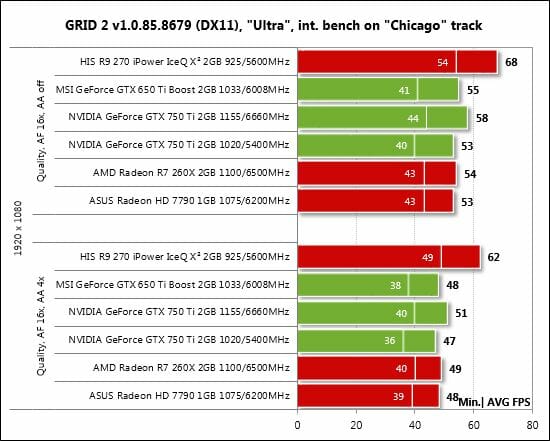
It is hard to compete with AMD in this game, yet the GeForce GTX 750 Ti is very close behind the Radeon R7 260X. Moreover, the new card is only second to the HIS Radeon R9 270 when overclocked.
Company of Heroes 2
Nvidia fails completely in this game.
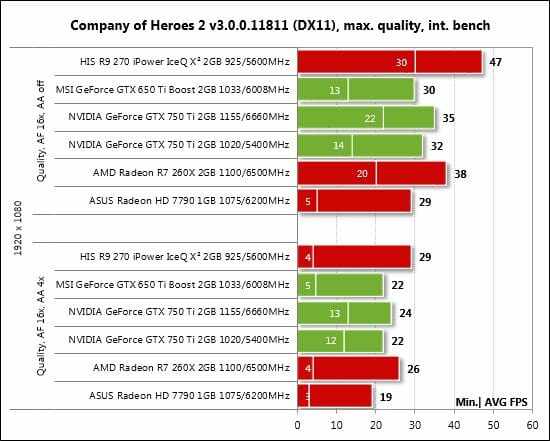
We can only note that the GeForce GTX 750 Ti equals the performance of the MSI GeForce GTX 650 Ti Boost and easily beats the latter when overclocked to 1155/6660 MHz.
Batman: Arkham Origins
We’ve got a typical picture in this game:
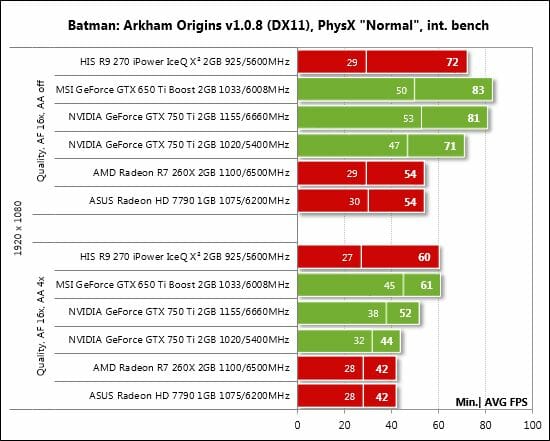
Battlefield 4
This game agrees with most of the previous tests:
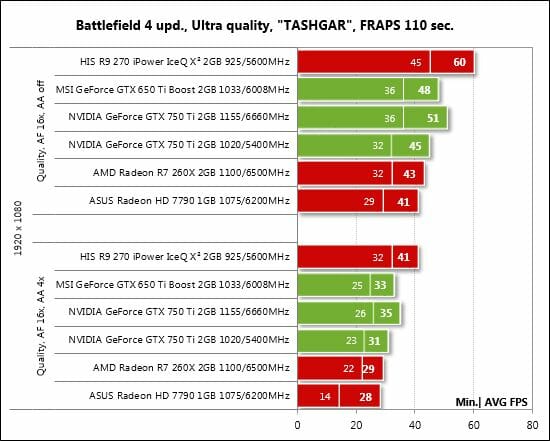
The GeForce GTX 750 Ti is 5-7% faster than the Radeon R7 260X, about 6% slower than the MSI GeForce GTX 650 Ti Boost, and also 6% ahead of the MSI when overclocked.
Here is a table with the full test results.
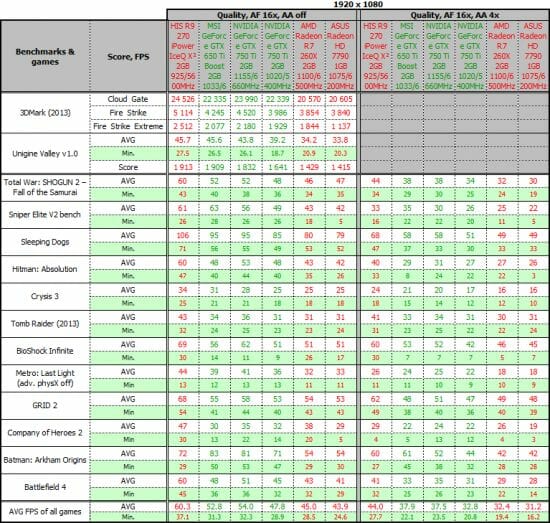
Now we can discuss our performance summary charts.
Performance Summary
First of all, let’s compare the Nvidia GeForce GTX 750 Ti 2GB with the AMD Radeon R7 260X 2GB, both cards working at their default clock rates. The earlier-released R7 260X serves as the baseline.
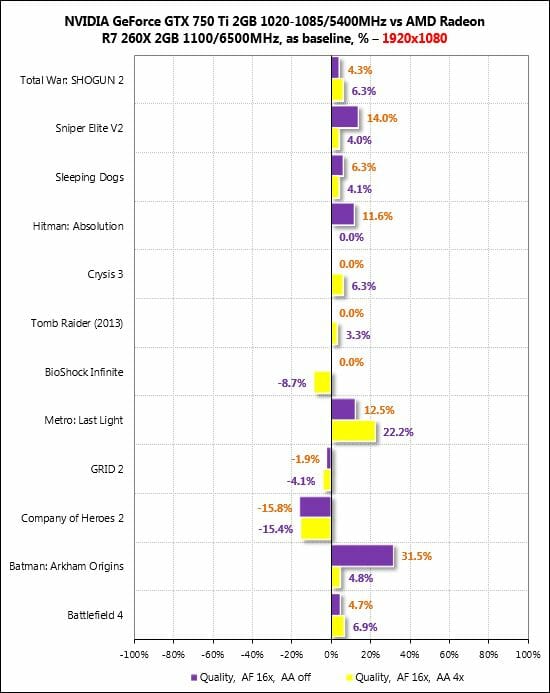
With antialiasing turned on, the GeForce GTX 750 Ti is slower in BioShock Infinite, GRID 2 and especially in Company of Heroes 2 but beats its opponent in Metro: Last Light, Total War: SHOGUN 2, Sniper Elite V2 and Sleeping Dogs. It is also ahead in Hitman: Absolution, Batman: Arkham Origins and Battlefield 4 when antialiasing is disabled. In the rest of the tests these cards are roughly equal to each other. Overall, the GeForce GTX 750 Ti 2GB is an average 5.6% and 2.5% faster than the Radeon R7 260X 2GB with antialiasing turned off and on, respectively.
There is no doubt that the GeForce GTX 750 Ti is faster than the GeForce GTX 650 Ti but we guess it would be more interesting to oppose the new card to the comparably priced GTX 650 Ti Boost. There are a lot of such products on the market, most of them with factory overclocking. That’s why we compare our GeForce GTX 750 Ti with the original GTX 650 Ti Boost from MSI:
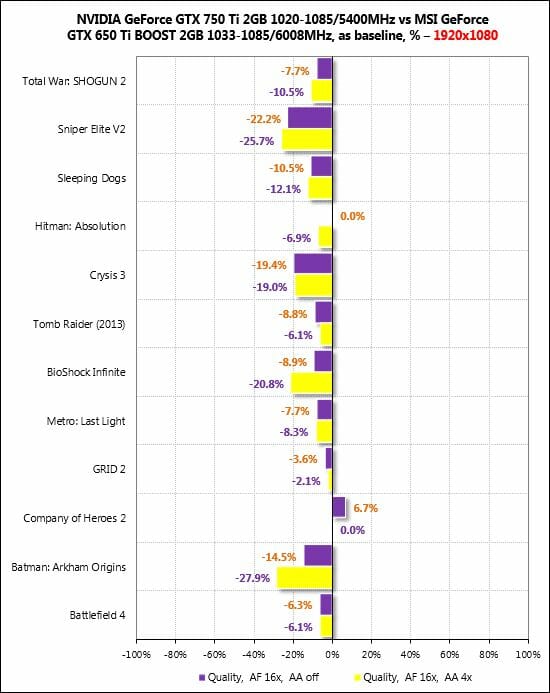
The new card loses everywhere save for one test mode of Hitman: Absolution and Company of Heroes 2. The average advantage of the MSI card over the GeForce GTX 750 Ti is 8.6% and 12.1% with antialiasing turned off and on, respectively.
Our sample of the GeForce GTX 750 Ti has good overclocking potential as we could increase its GPU and memory clock rates by 13.2% and 23.3%, respectively. Let’s see what performance boost this frequency growth translates into.
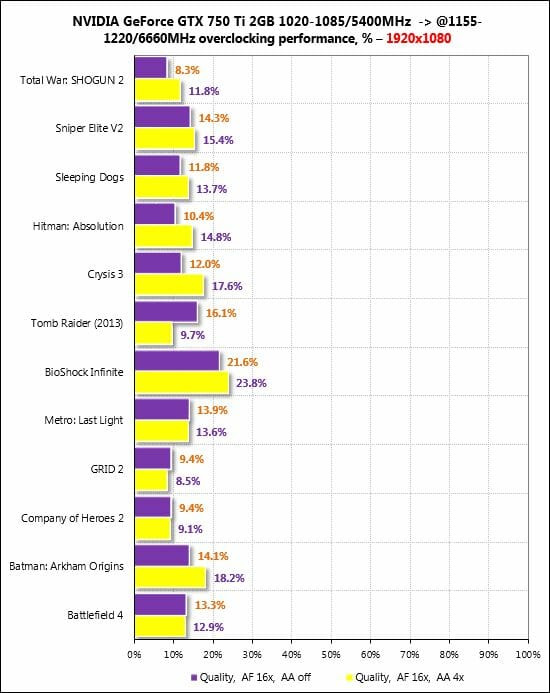
The performance scalability is excellent. In the worst case we get an 8.3% performance boost whereas in the best case, up to 23.8%! The average performance increase due to overclocking is 12.9% and 14.1% with antialiasing turned off and on, respectively. Graphics cards with 128-bit memory bus are usually too slow with enabled antialiasing, though.
Since the GeForce GTX 750 Ti overclocks so well, let’s compare it with the MSI GeForce GTX 650 Ti Boost at the overclocked frequencies, too:
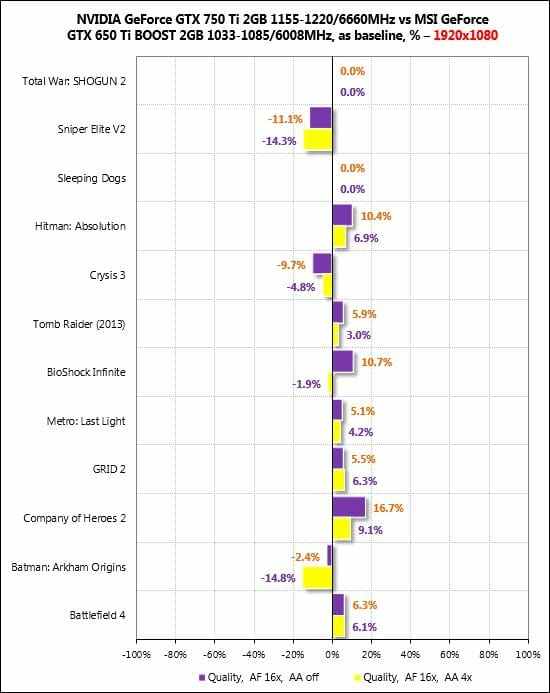
As we can see, the overclocked Nvidia GeForce GTX 750 Ti goes ahead in most of the games with the exception of Sniper Elite V2, Crysis 3 and Batman: Arkham Origins. But, of course, the GeForce GTX 650 Ti Boost can be overclocked just as well.
Power Consumption
We measured the power consumption of computer systems with different graphics cards using a multifunctional panel Zalman ZM-MFC3 which can report how much power a computer (the monitor not included) draws from a wall socket. There were two test modes: 2D (editing documents in Microsoft Word and web surfing) and 3D (the intro scene of the Swamp level from Crysis 3 running four times in a loop at 2560×1440 with maximum visual quality settings but without MSAA). Here are the results:
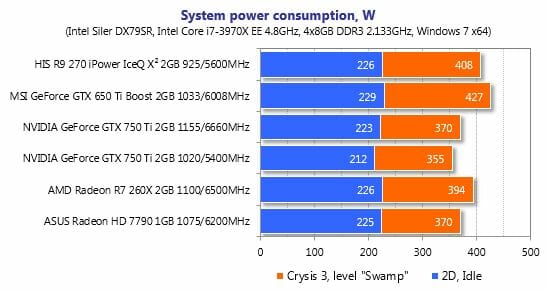
As expected, the GeForce GTX 750 Ti configuration is the most economical of all. The difference from the configuration with MSI GeForce GTX 650 Ti Boost is 72 watts at peak load, even though it is not wholly due to the graphics cards. Anyway, it is clear that the new Maxwell-based card is more economical than its predecessors and opponents. When overclocked, its power consumption grows by 15 watts at peak load.
In 2D mode the configurations are all comparable in terms of their power draw. We can also note that if you plan to use your GeForce GTX 750 Ti in a configuration like ours, the recommended 300W PSU won’t be enough.
Conclusion
The GeForce GTX 750 Ti graphics card features Nvidia’s GM107 chip with new Maxwell architecture. Designed for higher energy efficiency, the GPU indeed boasts an unprecedented performance-per-watt ratio. Compared to the GeForce GTX 650 Ti, which has more shader processors and texture-mapping units, the new card delivers higher performance while consuming only half the power. Moreover, despite the obvious power limits, our sample of the card did well in terms of overclocking, catching up with and even beating the Boost version of MSI’s GeForce GTX 650 Ti. Such low power consumption and heat dissipation make it possible to create small and quiet graphics cards, yet we are already looking forward to products with the second-generation Maxwell.
On the other hand, the new generation of Nvidia’s graphics cards doesn’t bring about any breakthroughs in terms of speed. At a recommended $149, the GeForce GTX 750 Ti enters a highly competitive midrange segment where we can see the GeForce GTX 650 Ti (including its Boost version), Radeon R7 260X and Radeon R9 270, the newest Radeon R7 265 and the old yet still selling Radeon HD 7850. Hopefully, the actual retail price of the new card won’t be too high because energy efficiency alone is not enough to attract buyers.
From our, perhaps subjective, point of view, the GeForce GTX 750 Ti (just like the GTX 650 Ti for that matter) is not a true gaming card, so it is somewhat too expensive for its humble performance. We guess the GeForce GTX 750 Ti, small and with passive cooling, should sell for about $100. Such a product would be a real bestseller.